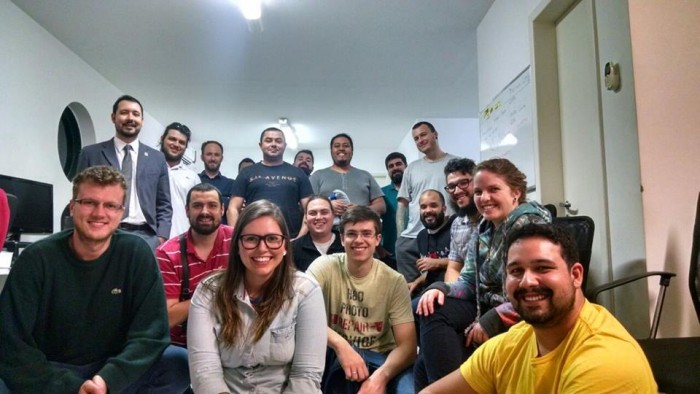Agile Layout - Improving Item Growth for Faster Results
페이지 정보

본문
Introduction
Agile design strategies Layout is transforming the way teams develop, examination, and launch products. Integrating agile technique with layout thinking, Agile Design uses an adaptable and iterative strategy that enables groups to react rapidly to market changes, incorporate individual comments, and continually enhance product top quality. As organizations progressively intend for a quicker time-to-market and a far better user experience, Agile Layout has actually emerged as a valuable method.
What is Agile Design?
At its core, Agile Design is the blend of dexterous advancement concepts with user-centered design approaches. Agile Design ultimately leads to a product that satisfies users' demands much more successfully.
 Key Concepts of Agile Style
Key Concepts of Agile Style
User-Centric Method: Agile Design puts customers at the facility. By constantly screening and refining based upon comments, designers guarantee the item aligns with real-world individual assumptions and demands.
Partnership: Agile Style emphasizes synergy, breaking down silos and motivating close collaboration between designers, developers, and stakeholders. This enhances communication and makes certain that each employee's understandings educate style options.
Iterative Development: Agile Style counts on iterative cycles-- short, focused sprints of work that lead to quick prototypes and rapid testing. This enables teams to identify and take care of concerns early, enhancing both speed and high quality.
Adaptability: Agile Style adjusts to changing requirements throughout the task. Teams focus on adaptability, adjusting as user demands advance or market conditions shift.
Benefits of Agile Style
Agile Design supplies numerous crucial benefits. It speeds up time-to-market by creating space for fast modifications, decreases thrown away sources, and reduces the risk of supplying a product that disappoints user assumptions. Additionally, Agile Layout cultivates a culture of versatility, making it easier for groups to pivot as new understandings arise.
Executing Agile Style
To carry out Agile Design, start by breaking down the design process into sprints, setting clear purposes for each phase. Foster a culture of cross-functional partnership by urging interaction between all included teams. Routinely examination designs with real users to make certain that the product remains aligned with advancing requirements.
Integrating nimble technique with design reasoning, Agile Design uses an adaptable and iterative approach that enables teams to respond swiftly to market shifts, include individual comments, and constantly improve product top quality. At its core, Agile Style is the mix of agile development principles with user-centered design techniques. Agile Design eventually leads to a product that satisfies users' demands a lot more properly.
To execute Agile Style, beginning by breaking down the style procedure right into sprints, setting clear objectives for each stage.
Agile design strategies Layout is transforming the way teams develop, examination, and launch products. Integrating agile technique with layout thinking, Agile Design uses an adaptable and iterative strategy that enables groups to react rapidly to market changes, incorporate individual comments, and continually enhance product top quality. As organizations progressively intend for a quicker time-to-market and a far better user experience, Agile Layout has actually emerged as a valuable method.
What is Agile Design?
At its core, Agile Design is the blend of dexterous advancement concepts with user-centered design approaches. Agile Design ultimately leads to a product that satisfies users' demands much more successfully.
 Key Concepts of Agile Style
Key Concepts of Agile StyleUser-Centric Method: Agile Design puts customers at the facility. By constantly screening and refining based upon comments, designers guarantee the item aligns with real-world individual assumptions and demands.
Partnership: Agile Style emphasizes synergy, breaking down silos and motivating close collaboration between designers, developers, and stakeholders. This enhances communication and makes certain that each employee's understandings educate style options.
Iterative Development: Agile Style counts on iterative cycles-- short, focused sprints of work that lead to quick prototypes and rapid testing. This enables teams to identify and take care of concerns early, enhancing both speed and high quality.
Adaptability: Agile Style adjusts to changing requirements throughout the task. Teams focus on adaptability, adjusting as user demands advance or market conditions shift.
Benefits of Agile Style
Agile Design supplies numerous crucial benefits. It speeds up time-to-market by creating space for fast modifications, decreases thrown away sources, and reduces the risk of supplying a product that disappoints user assumptions. Additionally, Agile Layout cultivates a culture of versatility, making it easier for groups to pivot as new understandings arise.
Executing Agile Style
To carry out Agile Design, start by breaking down the design process into sprints, setting clear purposes for each phase. Foster a culture of cross-functional partnership by urging interaction between all included teams. Routinely examination designs with real users to make certain that the product remains aligned with advancing requirements.
Integrating nimble technique with design reasoning, Agile Design uses an adaptable and iterative approach that enables teams to respond swiftly to market shifts, include individual comments, and constantly improve product top quality. At its core, Agile Style is the mix of agile development principles with user-centered design techniques. Agile Design eventually leads to a product that satisfies users' demands a lot more properly.
To execute Agile Style, beginning by breaking down the style procedure right into sprints, setting clear objectives for each stage.
- 이전글SATGASJITU : DAFTAR BANDAR TOGEL ONLINE RESMI TOTO MACAU 4D 5D MENJAMIN PEMBAYARAN LUNAS UNTUK SETIAP KEMENANGAN 24.11.22
- 다음글Key Pieces Of Plinko 24.11.22
댓글목록
등록된 댓글이 없습니다.

